INTRODUCTION
Many people used to ask us what we use in our lab to share files, download data, record through our IP cameras and stream media content and as answered numerous times in the past we use one (and even two sometimes) network attached storage devices/servers. Recently however some of you have asked us if it's really worth having a NAS online 24/7 and although electricity where we're located is not what we'd call "cheap" if you think about the pros the answer is crystal clear. It's true that you can't obviously perform the same tasks as you would with a desktop system or even a laptop (we're getting there however) but just the fact that the majority of NAS models use even less electricity than your average light bulb alone is enough to justify using one either as a media or a download server. Seagate may not be the very first brand name to come in mind when talking about NAS servers but they've actually been in that market for quite some time now (quite successfully) and since many of you asked today we'll be testing the NAS Pro 6-Bay model (DP6) with 24TB worth of storage preinstalled.
Founded in 1979, Seagate is the leading provider of hard drives and storage solutions. From the videos, music and documents we share with friends and family on social networks, to servers that form the backbone of enterprise data centers and cloud-based computing, to desktop and notebook computers that fuel our personal productivity, Seagate products help more people store, share and protect their valuable digital content. Seagate offers the industry’s broadest portfolio of hard disk drives, solid-state drives and solid-state hybrid drives. In addition, the company offers an extensive line of retail storage products for consumers and small businesses, along with data-recovery services for any brand of hard drive and digital media type. Seagate employs more than 50,000 people around the world.
The NAS Pro 6-Bay (DP6) is the top model in the desktop line by Seagate (there's also a 2-Bay and a 4-Bay model) and is targeted towards small businesses and offices with up to 50 employees. The DP6 is currently available in 5 different versions without (diskless) and with preinstalled drives (6/12/24/30TB) by Seagate and although this is nothing new since many other manufacturers sell their NAS with preinstalled drives it just feels slightly better when everything (including the software) is made by the same company (guaranteed compatibility). Under the hood of the DP6 we find a dual-core Intel Atom C2338 64-bit CPU running at 1.7GHz, 2GB DDR3 RAM (SO-DIMM) and Phison PS2251-03 USB 3.0-to-Flash micro-controller chip (used to store NAS OS 4) and an Noctua NF-P12 120mm fan (1300RPM/54.32CFM/19.8dBA). In terms of connectivity since the DP6 is aimed towards businesses it only features the basics such as two RJ45 Gigabit ports, 2 USB 3.0 ports and 1 USB 2.0 port (no HDMI port). Time to see if the NAS Pro 6-Bay (DP6) has what it takes to take on similar models by other manufacturers.
SPECIFICATIONS AND FEATURES

PACKAGING AND CONTENTS
Unlike other manufacturers Seagate ships the NAS Pro 6-Bay inside a plain cardboard box with a drawing of the unit at the front, their logo and the preinstalled capacity (24TB via six 4TB HDDs in our case).
Stickers with the serial numbers and barcodes for both the NAS and the mounted HDDs are placed on the left side.
The software and hardware features and specifications are listed on the right side of the box.
Another drawing placed at the rear of the box showcases all of the available connectors.
Packaging is excellent (two thick plastic spacers for the NAS and a 2nd cardboard box for the rest of the bundle) so not much to say here.
Along with the DP6 inside the box Seagate puts its power adapter, two different power cords (EU/UK), RJ45 LAN cable, plastic bag with screws for installation of 2.5" HDDs and the quick start guide.
THE NAS PRO 6-BAY 24TB
The all-black hard plastic enclosure of the NAS Pro 6-Bay may not feel as "durable" but it looks a lot more "professional" compared to other desktop NAS models. Size-wise the DP6 measures 218mm in depth, 174mm in width and 170mm in height and weighs less than 3Kg (without the drives).
For the fascia Seagate has used a nice glossy piece of plastic.
Two navigation buttons are placed on the top left corner of the fascia while on the left lower corner we find the on/off power button, one-touch backup button and a USB 3.0 port.
Seagate has placed their logo on the top left corner right next to a small LCD screen.
All 6 drive trays have push to release mechanisms as seen above.
As you can all see the drives that come preinstalled are not the NAS Enterprise ones i was expecting but the regular NAS models.
All of the trays feature tool-less mount for the drives (3.5" ones).
Almost all of the connectors are placed at the rear of the NAS but the 120mm fan by Noctua obviously steals the show.
The preinstalled capacity is also placed on a sticker found at the lower left of the rear right next to a Kensington lock.
On the other side we see the NAS OS rescue button (you can use it to reinstalled the OS from the NAS onto new drives), USB 3.0 port, USB 2.0 port, two RJ45 Ethernet ports and the power port.
Once you turn the NAS Pro 6-Bay on it will detect the drives and light up their LEDs along with the LEDs of the rest of the buttons.
The LCD screen is not just for show so through here you can see the RPM of the fan, temperature of the drives, capacity usage and much more.
NAS OS 4 SETUP
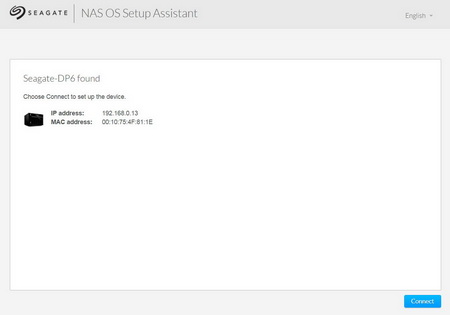
The first thing you need to do after plugging the NAS to your local network is to go to discover.seagate.com (you will need to have internet access for this - if not you can still start the setup procedure by using the MAC address of your NAS) to detect the NAS and start the installation.
Once the NAS is detected the setup wizard will detect any available firmware updates and install them.
Installation depends a lot on your internet speed but in our case it took around 4-6 minutes to download and install the update.
After that you just need to fill in your name, email and desired password (and the time zone if the one detected is not the right one) and you're good to go.
NAS OS 4 PART 1
Unlike other operating systems the NAS OS 4 is very simple something which is evident even from the login page.
The main screen contains 5 shortcuts, the alarms drop down menu (upper right corner) and the restart/shutdown drop-down menu (upper left corner).
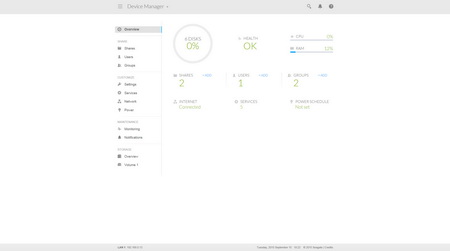
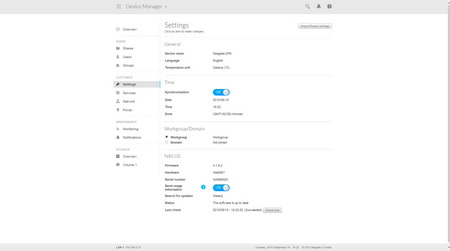

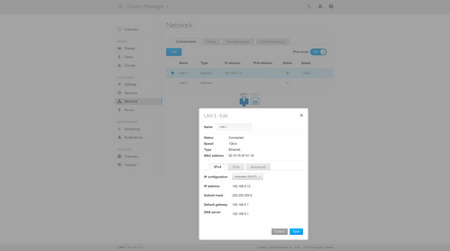
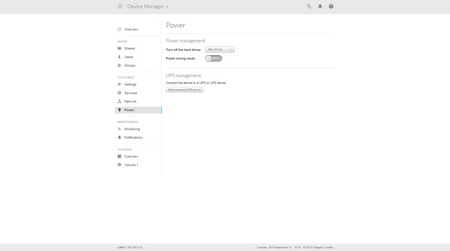
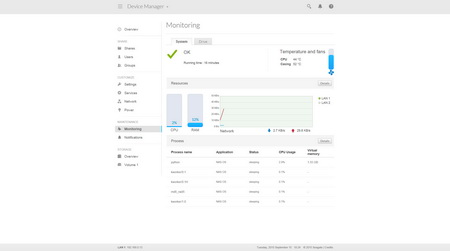

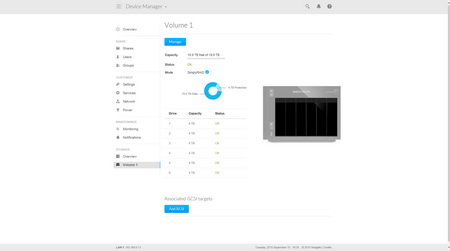
The first is the device manager and as expected through here you can monitor the state of the drives, create new shares or modify existing ones, add/remove/modify users, create/discard user groups, set the time and check for new FW updates, start/stop services, edit LAN settings, enable/disable the power saving and UPS functions, monitor the entire NAS, run diagnostics on the drives, check all logs and finally you can check and change the configuration of the drives.
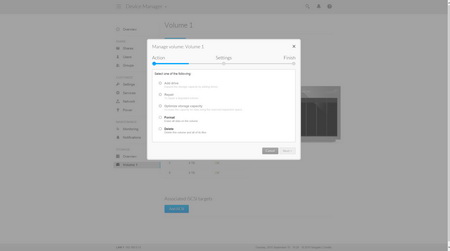
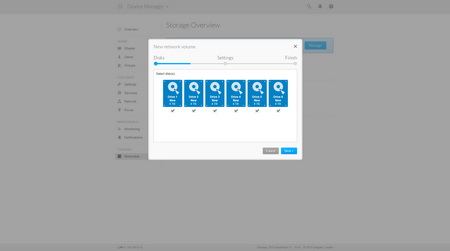
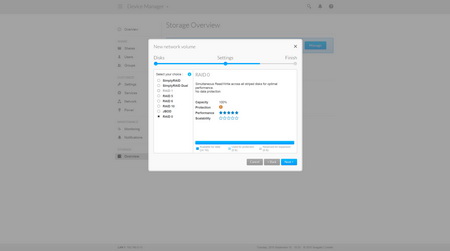
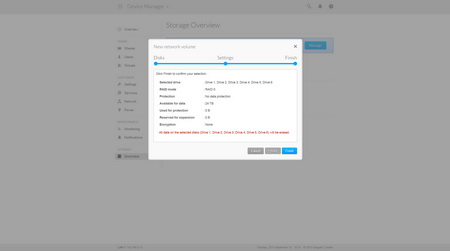
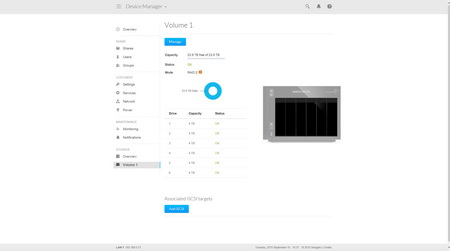
By default the drives are configured after SimplyRAID so if you'd like to change that you will need to delete the configuration, choose the drives you want to setup and then choose between the available configurations (SimplyRAID/SimplyRAID II/RAID0/RAID1/RAID5/RAID6/RAID10/JBOD).
NAS OS 4 PART 2
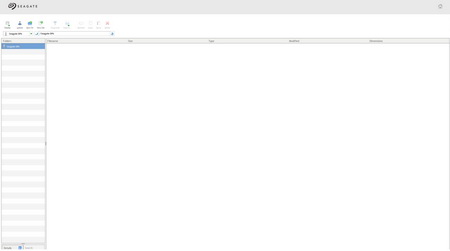
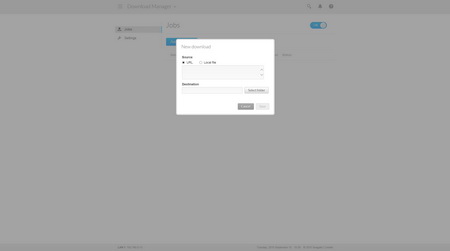
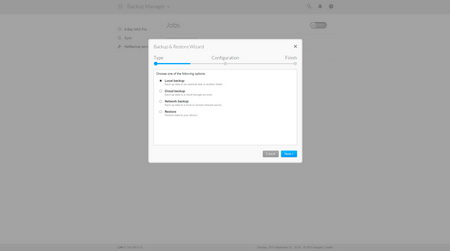
The NAS OS 4 also comes ready with a feature-rich file browser, download manager (URL/Local and not torrent) and a backup manager which can be used to backup and restore your system onto and from an external drive, CLOUD account or a remote server.
There's also an App manager present which unfortunately doesn't feature nearly as many apps as the ones found in QNAP, ASUSTOR and Thecus models.
A manual installation mode is also available so through here you can add 3rd party apps which are not yet available in the App manager.
Seagate has also developed their very own surveillance manager but just like the App manager its list of compatible IP cameras is short.
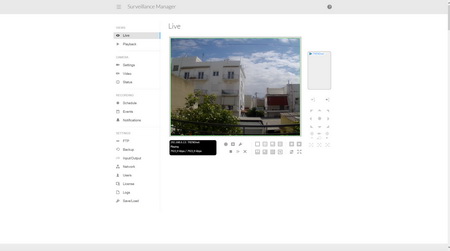
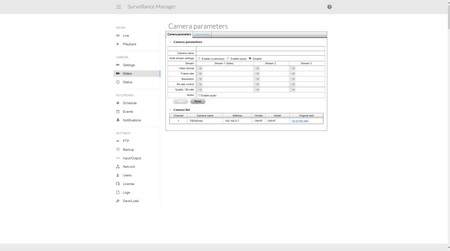
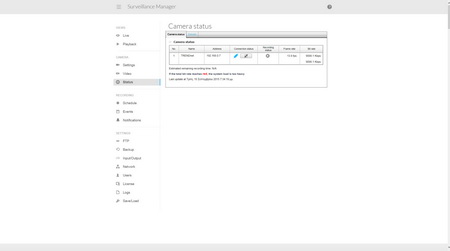
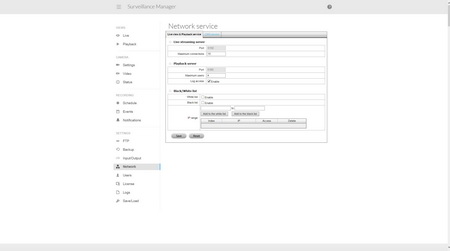
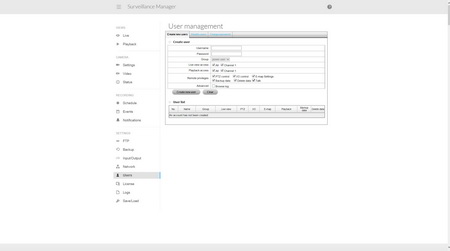
We did manage to configure our TRENDnet IP camera with the DP6 (seems that their support for TRENDnet models is excellent) and as you can see the Surveillance manager allows the end user to control and adjust many things including remote viewing but still it feels a bit rough around the edges.
TESTING METHODOLOGY – PERFORMANCE RESULTS
Originally we had decided that since some of the NAS servers/devices we've tested in the past are no longer in our possession (naturally) we would keep performing the exact same testing methodology we did in the past for as long as possible in order to provide accurate comparison results. However since our real-life tests are not enough for some people we also decided to throw in ATTO and Crystal Disk Mark to cover the more demanding users. However as always we will be using up to six Seagate Constellation ES.3 4TB SATA III hard disk drive(s) with 3.5” compatible units and up to two (for now) Enterprise Capacity 2.5 HDD V3 2TB SATA III HDDs with 2.5” compatible units to perform several upload/download tests with 10.9GB (Single) and 40,8GB (RAID) files. Tests are repeated a total of 4 times after which we record the average numbers (from the 4 peak ones) into our charts. The network device used for 1GbE tests is the same Netgear D6300 AC1600 Gigabit ADSL2+ Modem/Router we’ve been using lately when performing tests on NAS servers. Since the 25th of June 2015 for 10GbE tests we’ll be using a Netgear ProSafe XS712T 10G Smart Switch and an Intel XT540-AT2 10GbE PCIe card (10GbE compatible NAS cards will be provided from each company and stated in each review).
* For this review we used both the six 4TB NAS drives that came with the DP6 (RAID0/5) and our usual ES.3 4TB drives (JBOD/RAID0/RAID5).
SINGLE DISK TESTS
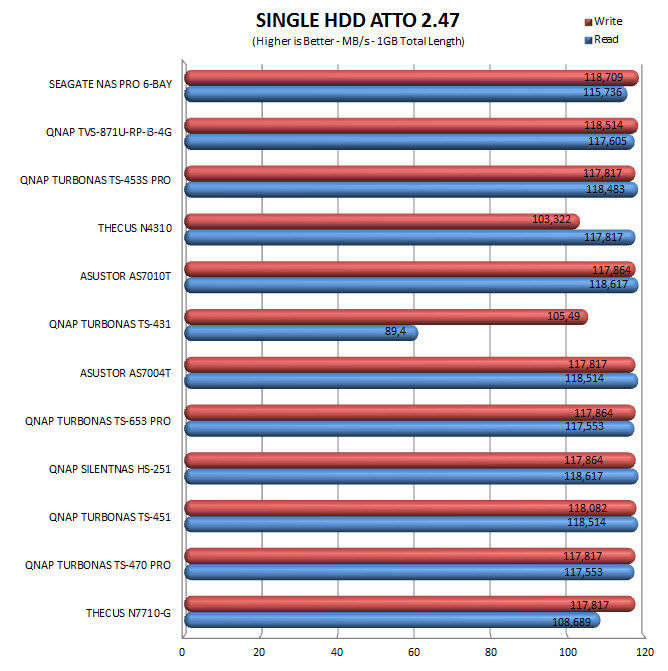
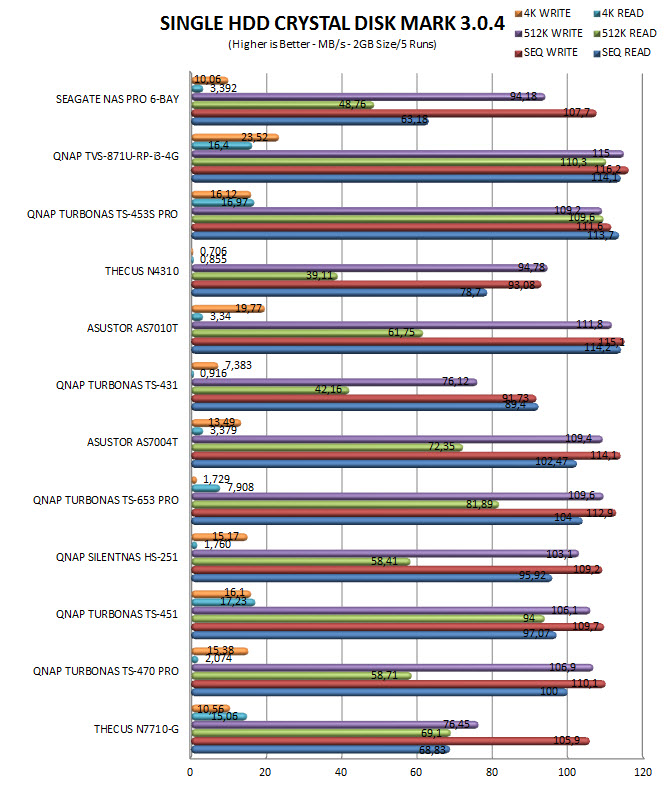

RAID TESTS

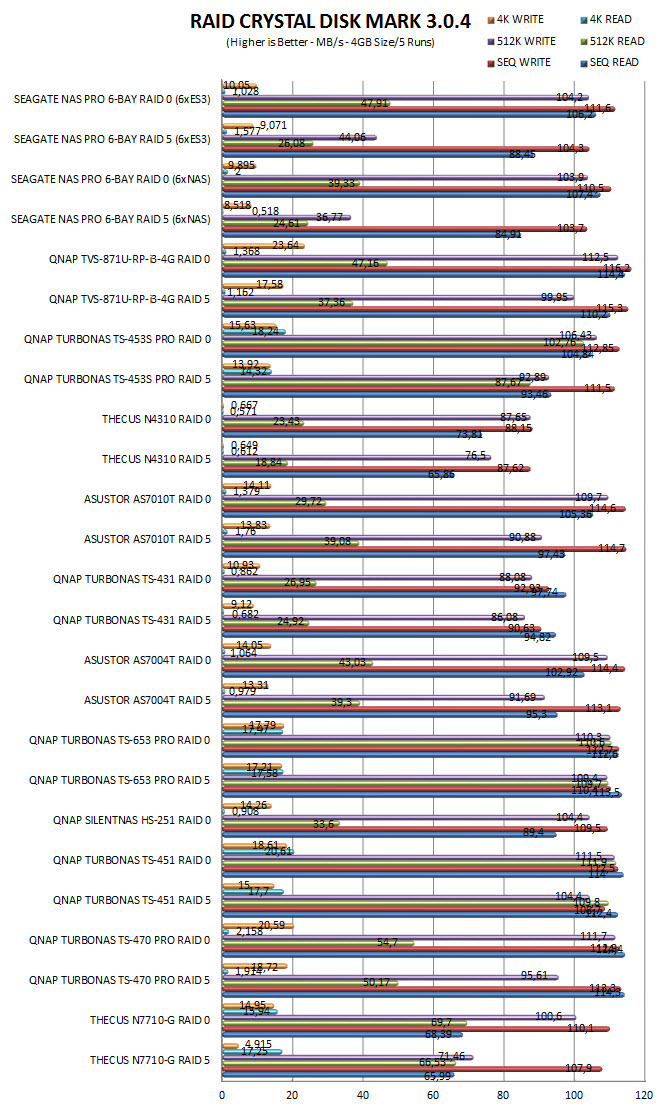

TEST RESULTS – TEMPERATURES / CONSUMPTION / NOISE
TEMPERATURES

POWER CONSUMPTION

NOISE LEVELS

CONCLUSION
QNAP, ASUSTOR, Thecus and Synology may be considered to be the leading NAS manufacturers in the world but companies like Seagate also have a good piece of the pie and after testing the NAS Pro 6-Bay DP6 we know exactly why that is. You may miss out on some features like an HDMI video output and the wealth of applications offered by models made by the mentioned manufacturers but at the same time you are getting a device designed by the same manufacturer as the hard drives inside and that alone is enough to guarantee 100% compatibility. On top of that add the extremely easy to navigate and use NAS OS 4 again developed by Seagate and you’ve got yourself what is clearly one of the fastest, almost silent and easy to use 6-Bay desktop NAS models in the market. The DP6 however has some drawbacks like the mentioned lack of an HDMI video output but most significantly the zero upgradability. This may not be really a drawback since the NAS OS 4 is not heavy and we did record excellent data transfer speeds but still 2GB of DDR3 RAM may not be enough to some people (you may be able to replace the default RAM with a larger capacity SO-DIMM module but we didn’t try it). A smaller drawback is the cooling efficiency of the single 120mm fan used which although quite silent it doesn’t do a great job in cooling the HDDs mounted inside (although 47 degrees at load is well within safe levels).
We already mentioned that the NAS Pro 6-Bay DP6 is currently available in 5 different versions but the diskless (STDF200) and 24TB (STDF24000200) versions currently retail for USD599/USD1599 inside the USA (Amazon.com) and for 479Euros/1668.99Euros inside the EU (Amazon.de). The diskless version we all agree that it’s priced very well and we even consider it a catch for people looking to get a NAS without multimedia capabilities. On the other hand however we were expecting slightly lower price tags for the 24TB versions since the 6 NAS HDD 4TB drives inside cost roughly USD900/1050Euros so Seagate could have obviously placed a more “tempting” price tag on them. Still the fact that Seagate checks each and every unit prior to leaving their factory means that you won’t experience any issues once you connect the NAS to your local network and to some people (especially businesses) that matters a lot. Overall we would like to see an HDMI output and multimedia capabilities in upcoming models by Seagate but even if that never comes to pass there’s still a specific target audience for such models and since the NAS Pro 6-Bay DP6 is very fast, extremely easy to use, has room for up to 6 drives and is priced just right it gets our Golden Award.
 PROS
PROS
- Build Quality
- Excellent Performance
- 6 Tool-Free Drive Trays
- LCD Screen
- NAS OS 4 (Very Easy To Use)
- Noise Levels
- Models With Preinstalled Drives (100% Compatibility Tested)
- Price (For Some)
CONS
- No HDMI Output
- 2GB DDR3 Ram Fixed
- Number Of Available Applications
- HDD Cooling

 O-Sense
O-Sense





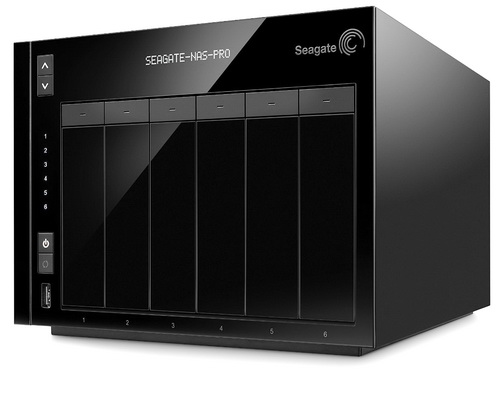
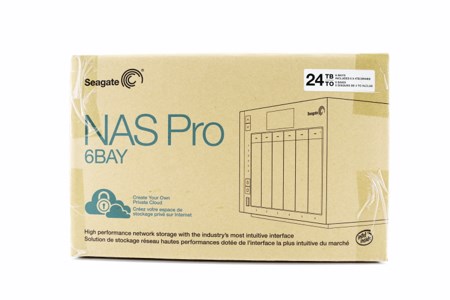
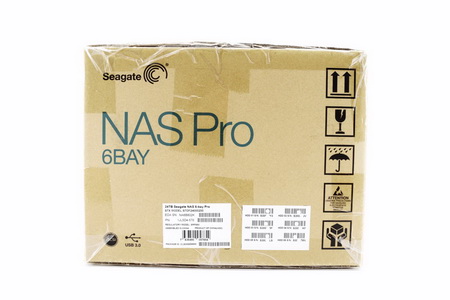
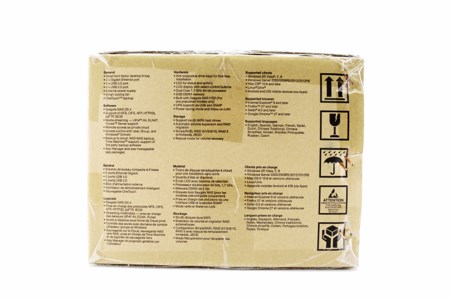
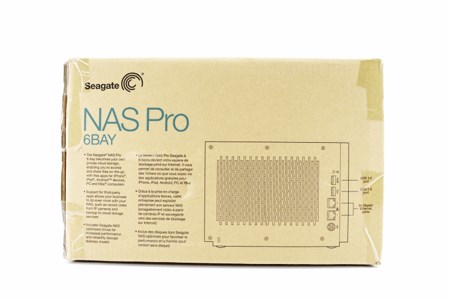

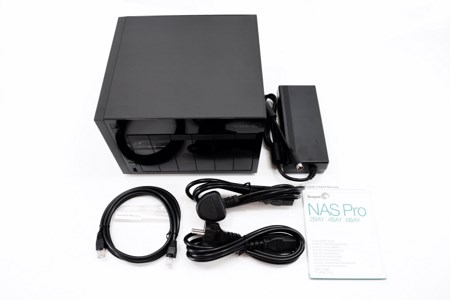

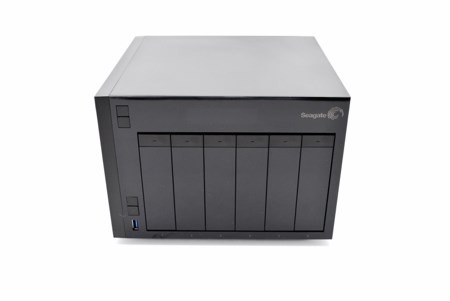
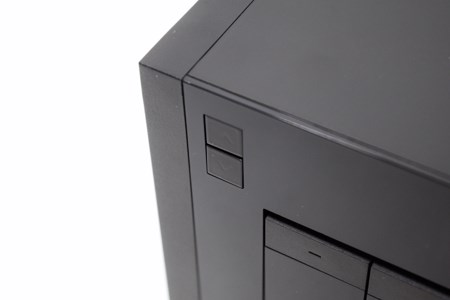

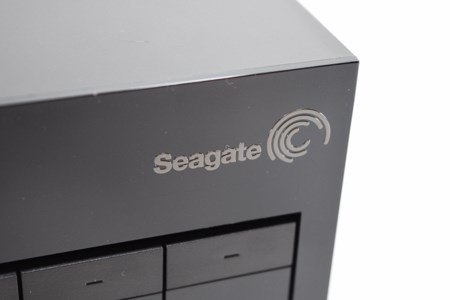
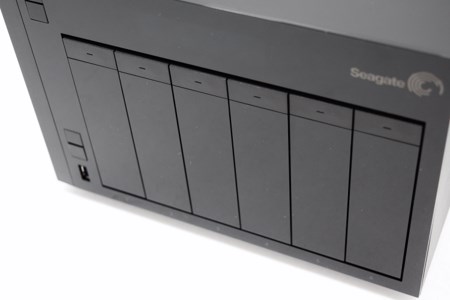
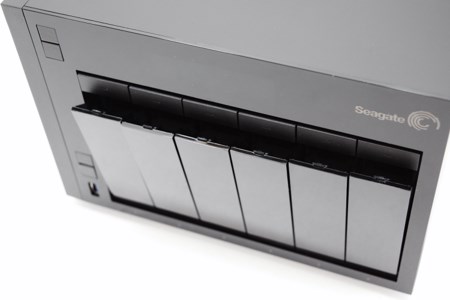
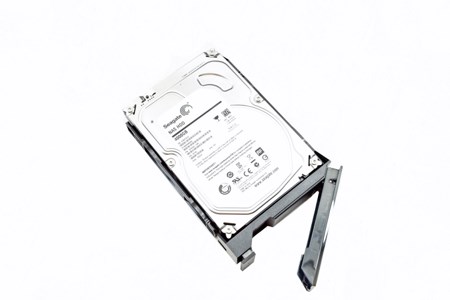
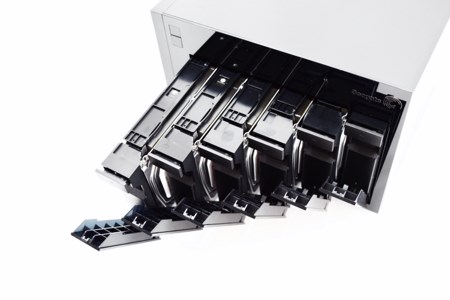
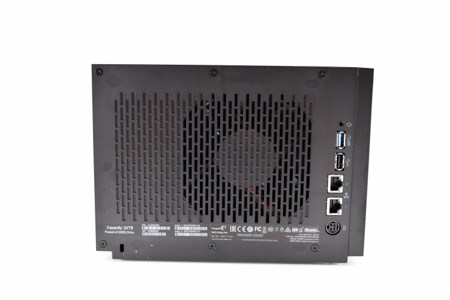
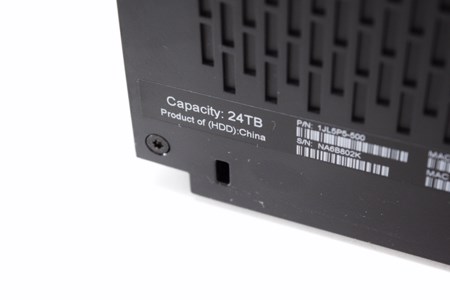
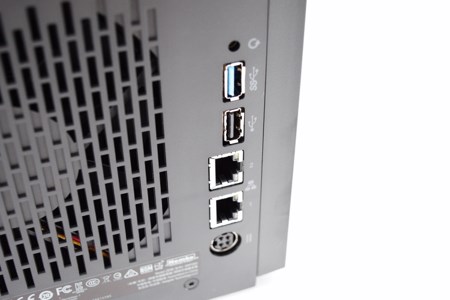
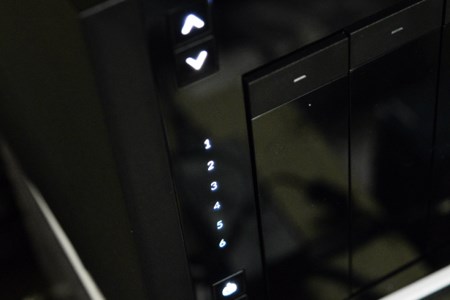
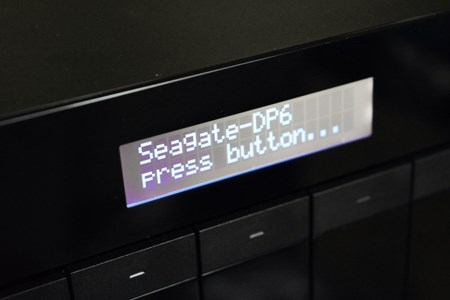
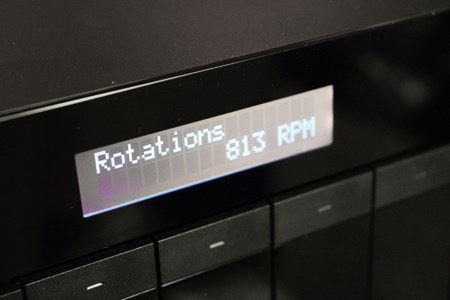
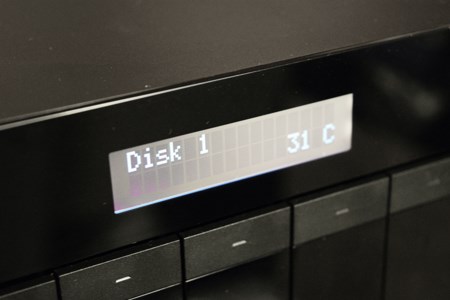
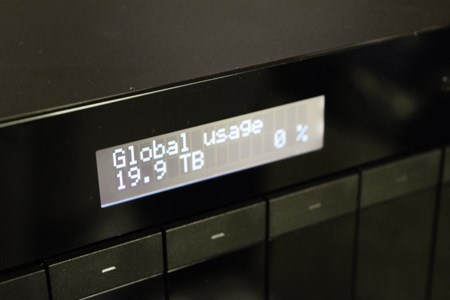
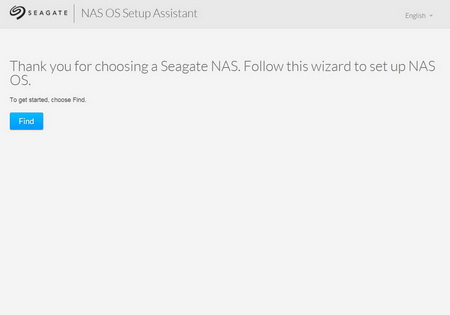

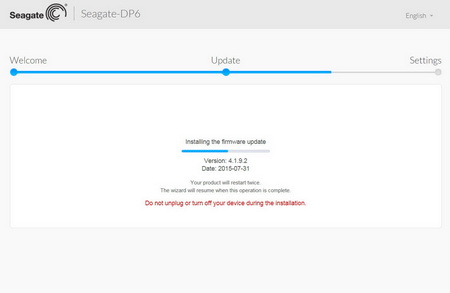
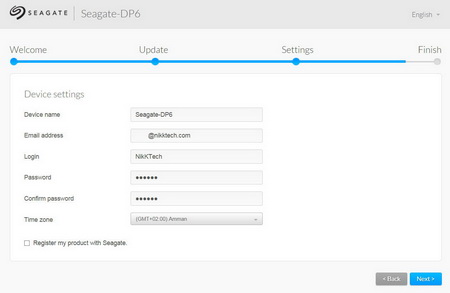
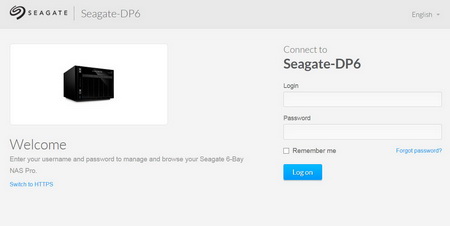
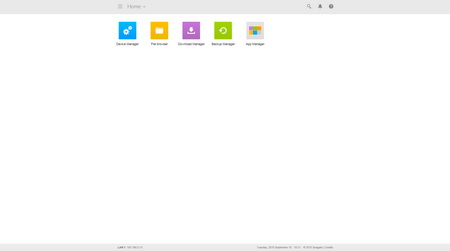
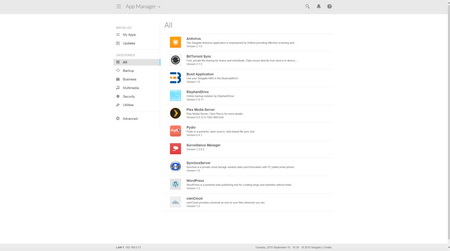
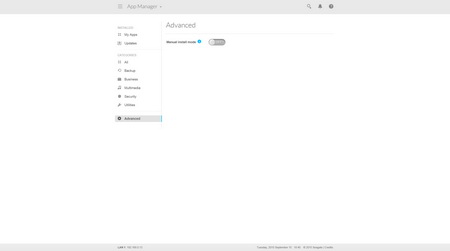

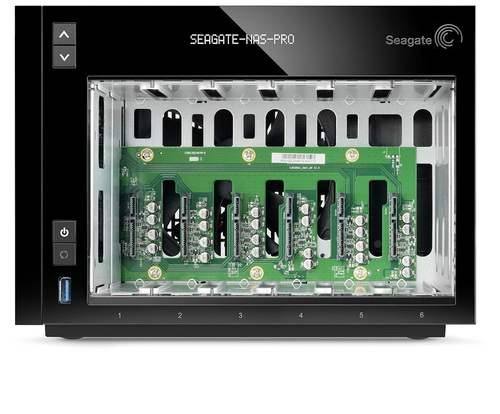


.png)

